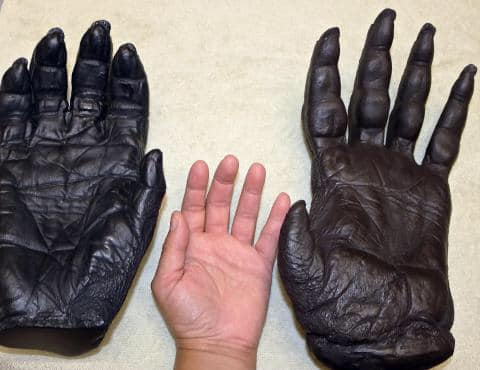Likely between 25 and 30 million years ago, the evolution of the great apes brought about further refinement of the opposable thumb. This period saw the divergence of the lineages that would lead to modern apes, including orangutans, gorillas, and chimpanzees. The great ape thumb evolved to become more robust and versatile, allowing these primates to perform a wider range of tasks. The ability to grasp and manipulate objects with precision became increasingly important for activities such as tool use, social interactions, and foraging. This evolutionary step set the stage for the remarkable capabilities seen in modern apes and, eventually, in humans.
Image: Gorilla on right, human, then orangutan. Orangutan-like hands evolved about 30 mya, gorilla-like hands evolved about 12 mya, and human-like hands evolved about 3 mya.











